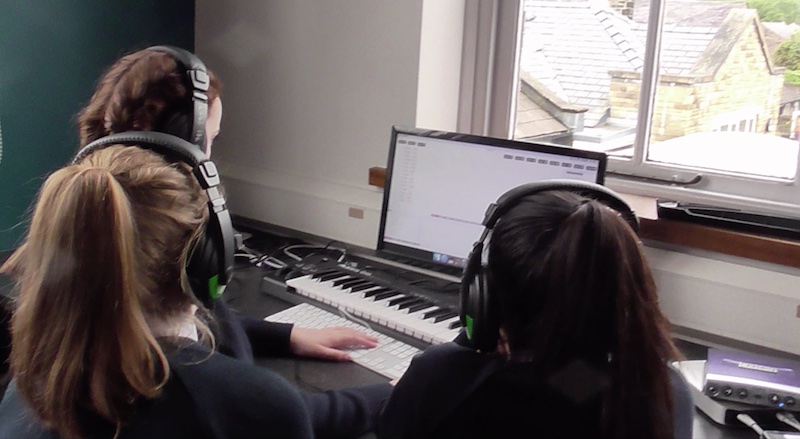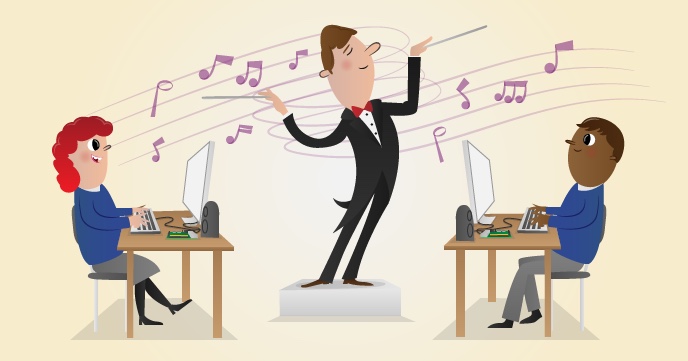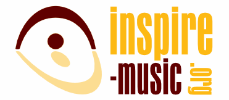The purpose of this unit of work was exploration – to find out if new ways of working with technology in a music classroom setting might have meaningful musical benefits and outcomes.
The school is a specialist technology college and so the development of approaches to computer programming is a priority for the school. Initially, the targeted outcomes were focused on developing approaches to composition which might especially benefit those students who struggle with more conventional approaches to composing music.

What is the context of the work?
Lancaster Girls' Grammar School is situated within a selective education area. The proportion of the all-female students in the school without English as their first language is below half the national average and the proportion from minority ethnic groups is just over half the national average. The number of students with learning difficulties and/or disabilities is very low.
This case study reflects the work of a set of 25, Year 8 students. At the moment, the work is a standalone unit, but there is an intention to integrate the approach more fully into the curriculum once the potential has been more fully explored. The unit of work is being led by Head of Music, Paul Swannell, with some support from Lancashire Music hub's music technology consultant David Ashworth (and see http://www.lggs.org.uk/music/10837.html ).
What is the content of the work?
This was a short series of standard, one hour classroom lessons for a class of Year 8 girls. They were introduced to the programming framework and taught a few programming commands which would enable them to generate notes with a range of pitches and durations. Working in pairs on a shared computer with two sets of headphones, the students created melodies which were shared with the class.
Sonic Pi in the Classroom has been developed at the University of Cambridge and is an innovative use of technology as a means of creating and organising sounds in composition, improvisation and performance ( http://sonic-pi.net ). The links with more traditional approaches are strong as there is still a requirement to make musically sensitive use of such parameters as intonation, dynamics, phrasing, expression, fluency. Careful critical listening is a crucial component in this activity as is the requirement to develop a literacy in using a new form of musical 'notation'. Elements of expressiveness, aesthetic sensitivity and discrimination can be explored once students have gained confidence with working with some of the more extended features of the programming language.
What are the key features of the teaching and learning approach?
There are two complementary approaches that teachers can take with this software. The first is to take the students step-by-step through learning the language and trying ideas out at each stage, so pupils gradually build up a programming vocabulary. The on-site tutorials and schemes of work on the companion website http://www.sonicpiliveandcoding.com are useful for working in this way.The second approach is to provide some pre-programmed templates for musical exploration. These can be set up to encourage exploration of a range of musical concepts such as chord progressions, theme and variations, building melodies and so on. The use of the 'live looping' function allows students to make adjustments to various musical parameters as the music is playing. Using 'what if' type questions, engages learners in trying out ideas, making musical decisions and developing programming skills.

This taps into a much wider education agenda. As the Sonic Pi Research Report notes: “An expanded literacy curriculum would recognise the wide range of media that children use and encounter, and the diverse literacy practices in which they do and could engage in their current and future lives”.
How is the work being reviewed?
Sonic Pi files can be saved in two forms. Firstly, as a text file which shows the series of computer programming commands. This is equivalent to a musical score in more 'conventional' forms of music making. Audio recordings are also easily created in the form of wav files. This is a more appropriate way of capturing real time performance using Sonic Pi and complements the first approach. The initial unit of work was judged to be successful. Students found working with Sonic Pi to be both accessible and engaging, and the work produced was of high quality. It was also judged to be a useful way of working for those students who lack confidence and/or experience in working with more traditional approaches to music making.
What are the positive outcomes for children/young people
Students working with Sonic Pi display a high degree of enthusiasm and interest in working with music in this way. Computer programming is a key growth area in the school curriculum and uptake for GCSE and A level in this subject is increasing rapidly. Sonic Pi can be used to produce music in a wide range of genres and styles and is ideally suited to producing dance/club/DJ music, which can also be performed live. So there is a strong connection with the cultural interests favoured by many young people.
The fact that the programme is free and will work on any platform, including low spec computers, means that it is accessible for most of our students beyond curriculum hours. This means that they can work on their own using a self-directed approach and so become more self-reliant in their learning. The fact that the files are small and can easily be shared introduces a social dimension which increases the possibilities for collaboration and also sharing through performance.
What are the key features of teacher/leader behaviour that are enabling those positive outcomes?
Because there is so much support from the programme developers in learning to use the programming language—which is also being supported and reinforced in other curriculum areas—the music teacher is able to focus more fully on supporting the musical development and outcomes rather than also having to 'teach the technology'. Many students display a natural confidence with programming and are ready to help each other out with any debugging issues. So this element of peer learning can be harnessed to relieve some of the perceived pressure on teachers who might feel that they have to teach all the elements of the activity.
How replicable or adaptable is it?
The features which make this work replicable are:
- Free, reliable software – any platform, including low spec computers;
- There is likely to be strong support in schools from the Senior Leadership Team, computing departments and ICT support who are anxious to develop this way of working;
- Students can easily continue working with Sonic Pi beyond lesson times; and
- There is a considerable range of online support for teachers and students working with Sonic Pi (see http://sonic-pi.net ).
Resources
- Access Sonic Pi developer's Sam Aaron YouTube channel here https://www.youtube.com/user/samaaronuk/feed
- Download Pam Burnard’s research report here: https://goo.gl/j4RBoL
- Access the Sonic Pi ‘toolkit’ here: http://www.sonicpiliveandcoding.com
